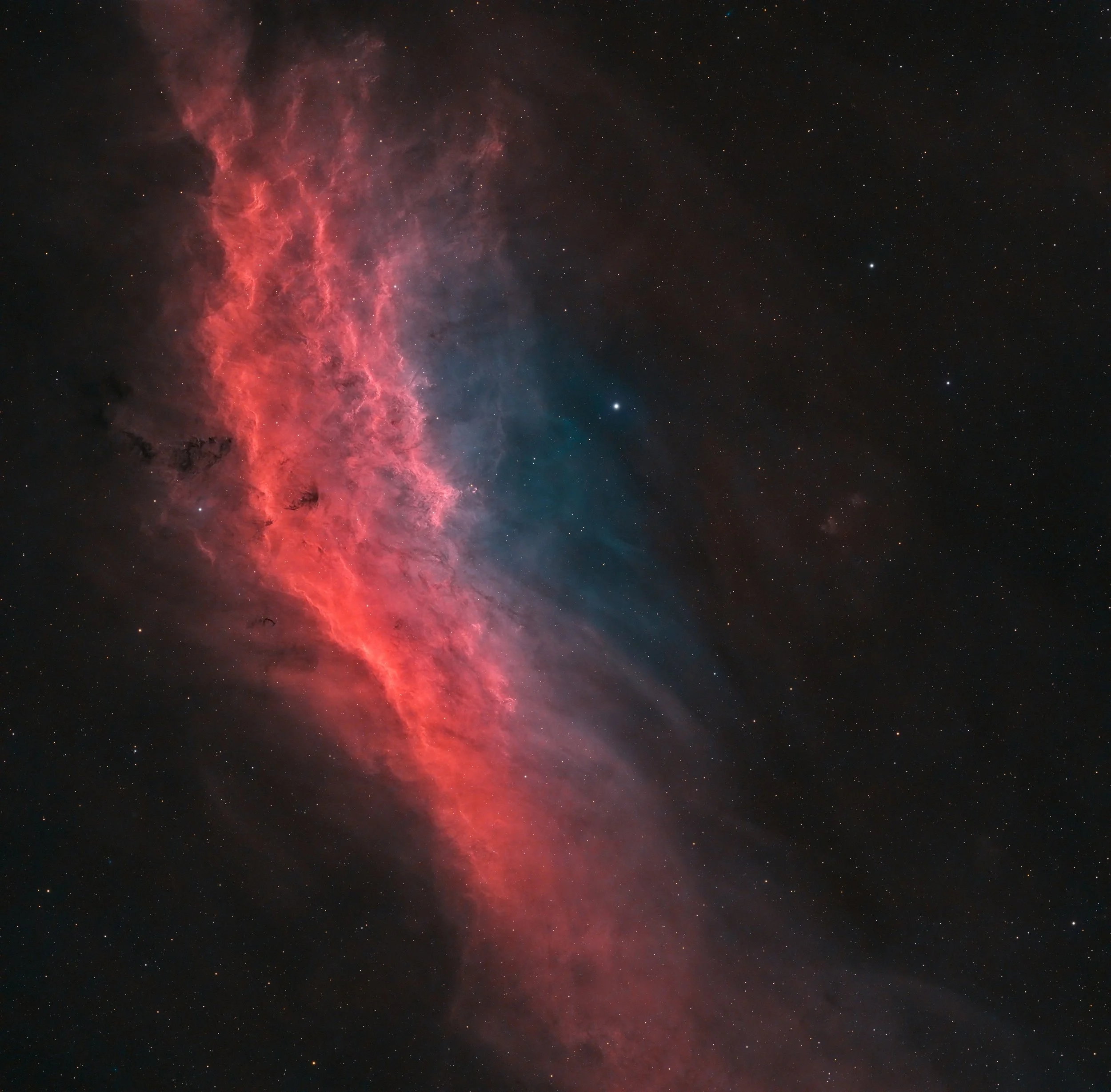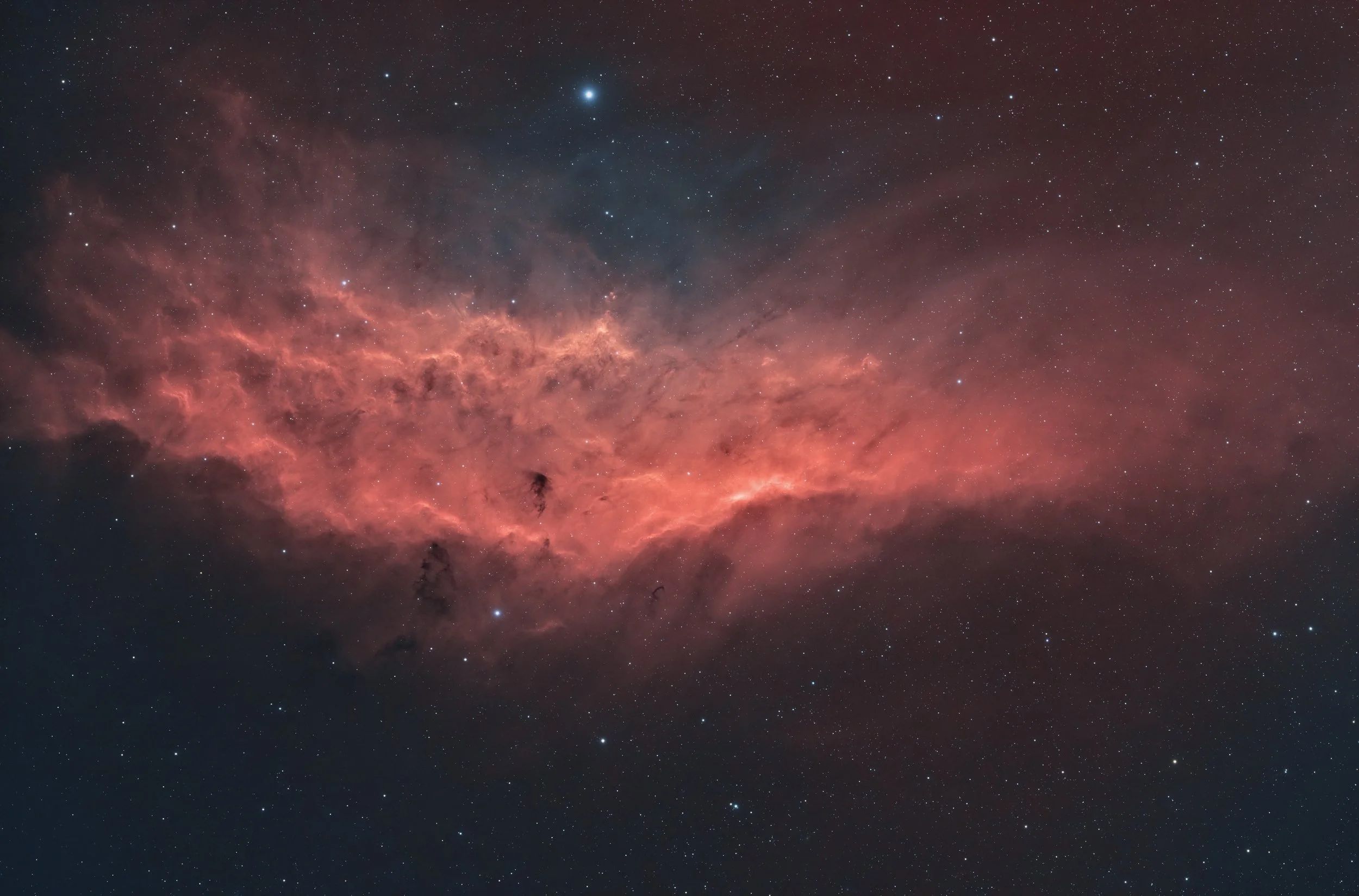
AAPOD2 Image Archives
the California nebula
Featured Astrophotographer on AAPOD2
California Nebula (NGC1499) in SHOLRGB
The California Nebula (NGC 1499) is an emission nebula spanning over 100 light-years in the constellation Perseus, located approximately 1,000 light-years from Earth. Its elongated shape and glowing hydrogen gas resemble the outline of the U.S. state of California. The nebula is primarily ionized by the nearby hot, massive star Xi Persei, whose intense ultraviolet radiation excites the surrounding hydrogen, producing its characteristic red glow in visible light. This deep capture in the SHOLRGB palette enhances the intricate structures of ionized sulfur (SII), hydrogen (Ha), and oxygen (OIII), revealing subtle variations in gas composition and dynamics.
With a total integration time of 54 hours and 42 minutes, this image showcases an extraordinary depth, capturing delicate filaments and extended faint structures that are often lost in shorter exposures. The high signal-to-noise ratio allows for an intricate balance of narrowband and broadband data, preserving both the detailed ionization fronts and the rich stellar background. The result is a highly detailed and scientifically revealing view of one of the sky’s most well-known emission nebulae.
The California Nebula
The California Nebula, named for its resemblance to the shape of the U.S. state, is an iconic emission nebula located in the constellation Perseus, about 1,000 light-years away. Spanning nearly 100 light-years, this massive cloud of ionized hydrogen glows predominantly in deep red hues due to the influence of nearby star Xi Persei, an exceptionally hot and bright O-type star. The intense ultraviolet radiation from Xi Persei energizes the nebula's hydrogen gas, causing it to emit the characteristic red light of H-alpha.
This nebula is particularly intriguing because of its elongated structure and dynamic interplay of light and shadow, created by regions of interstellar dust that obscure parts of its glowing gas. It’s an active region of the sky, rich with complex textures and fine details that are brought to life in narrowband imaging, especially with H-alpha filters.
Astrophotographers and astronomers alike are drawn to the California Nebula for its striking appearance and its position within a star-rich field of the Milky Way. Although faint to the naked eye, it is a treasure for imaging enthusiasts who can reveal its full splendor under dark skies with long exposures.
A celestial homage to Earth’s own geography, the California Nebula is a timeless subject that captures the imagination and beauty of the universe.
The California Nebula
The California Nebula unfolds its vibrant hues in a stunning narrowband image. Captured through specialized filters, this rendition highlights the nebula's intricate details in sulfur, hydrogen, and oxygen wavelengths. Located in the constellation Perseus, approximately 1,000 light-years away, the California Nebula takes on a mesmerizing appearance, resembling the iconic U.S. state it is named after. This astrophotographic endeavor, utilizing the SHO (Sulfur, Hydrogen, Oxygen) narrowband technique, unveils the complex interplay of gases and dust, offering a glimpse into the dynamic processes shaping the nebula's cosmic landscape.
Image Title: Perseus Star Cradle
This bi-color image of the California Nebula is produced by combining data from two specific wavelengths: Hydrogen Alpha (Ha) and doubly ionized Oxygen (OIII). The red hues represent areas rich in ionized hydrogen (Ha emissions), indicative of regions with active star formation. The bluish-green tones correspond to OIII emissions, revealing areas with doubly ionized oxygen. This data aids astronomers in studying the nebula's chemical composition, ionization processes, and the influence of massive stars on its structure. The application of Ha and OIII imaging allows for a more detailed understanding of the dynamic astrophysical processes at play within this interstellar cloud located in the Perseus Arm of our Milky Way galaxy.





